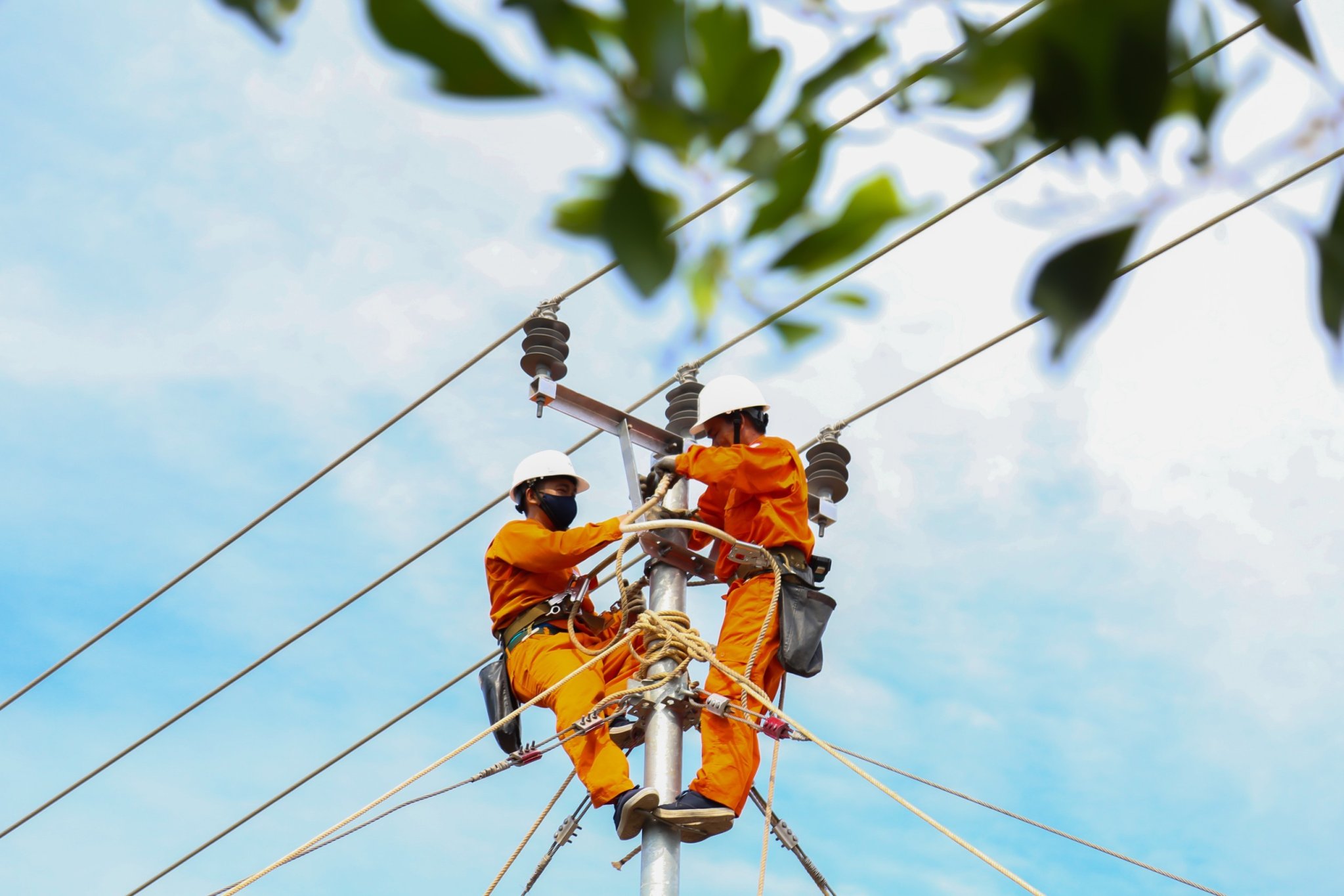Concentrate all efforts to ensure power supply
According to information from EVNCPC, in 2024, the maximum capacity is expected to reach 4,194MW, an increase of 10.4% compared to 2023’s, EVNCPC's commercial electricity output is 25.771 billion kWh, an increase of 6.5%. Of which, dry season electricity output (from March to July) is estimated to reach 11.297 billion kWh, an increase of 6.8% compared to that in the dry season of 2023. On the hottest day of the dry season in 2024, the output is expected to reach 87.6 million kWh/day, an increase of 8.4% compared to that of the highest day last year.
Faced with that situation, the General Director and head of the 2024 Power Supply Steering Committee of EVNCPC Ngo Tan Cu has directed the Committees and member units to implement specific and drastic measures to increase stable power supply for more than 4.7 million customers.
During the peak dry season this year, EVNCPC mobilizes maximum capacity of 1,095MW from hydropower plants under its authority, from hydropower plants under 30MW connected to the medium voltage grid and connected to the 110kV power grid, mobilizing power from rooftop solar power with peak dry season capacity of about 1,970MW and the rest from power received from the national power system. With available power supply sources already prepared, EVNCPC ensures maximum mobilization of generation capacity during the peak dry season.
EVNCPC also focuses on investing in the construction of power source and grid projects in the provinces and cities of the Central region - Central Highlands.

EVNCPC strengthens its response force during hot season
General Director, Head of the 2024 Power Supply Steering Committee of EVNCPC Ngo Tan Cu noted that during hot peak days, power companies do not carry out the work that must be stopped, reducing power supply, causing power outages for customers, except when troubleshooting is required. At the same time, strengthening the force in duty to promptly handle incidents, ensuring incidents are resolved within no more than 2 hours. When there is an incident leading to a power outage during the night, the units handle it immediately to restore power to customers, not leaving it until the next day. Customer Care Center of the Central Power Corporation strengthens the call center 19001909 to receive and promptly answer problems of electricity customers related to power supply in the area.
In addition, EVNCPC requires units to strengthen repair, maintenance, and cleaning of the power grid using hotline technology without causing power outages or interrupting power supply to customers in the Central-Central Highlands region. As for the 110kV power grid, Power Companies review maintenance and repair work to be completed before March to best ensure the power supply to loads in the area during the peak months of the dry season.
During the peak heat periods, based on important and priority loads, power companies consider arranging backup diesel generators and staffing at 110kV substations supplying power to locations. Major political and cultural activities of centrally-run provinces/cities take place. Teams and groups strengthen inspection, detect, and promptly handle defects in power equipment, power grids, unmanned 110kV substations, monitoring control, and data collection systems - SCADA, and do clearing to ensure the safety of corridors; propagate and prevent cases of flying kites near power lines, shooting metal-coated paper fireworks and throwing objects onto power lines, causing violations of the power grid safety corridor.

EVNCPC applies hotline technology to increase reliability of power supply to customers
Encourage customers to save electricity together
To ensure a stable power supply, EVNCPC also strengthens advocacy with customers to save electricity and implements load adjustments to ensure power supply during peak months. Power companies closely follow and coordinate with the People's Committees and Departments of Industry and Trade of the Central and Central Highlands provinces/cities in implementing Directive No. 20/CT-TTg dated June 8, 2023, of the Prime Minister on enhancing electricity saving in the period 2023-2025 and following years (Directive 20).
Regarding the Demand Response (DR), EVNCPC directs power companies to review large electricity consumers and industrial production customers with electricity consumption of 1 million kWh/year or more that have not signed agreements to participate in a non-commercial DR program or an agreement that has expired/is about to expire to sign a new agreement. Load-shifting solutions are also coordinated by units and persuaded by large customers. Thereby, it is possible to shift part of the capacity of industrial production customers with electricity consumption of 1 million kWh/year or more out of peak hours/seasons during the hot months from April to July 2024.
In addition, EVNCPC has directed power companies to develop typical load charts, calculating the maximum capacity used by each customer during peak hours of the system. On that basis, power companies work out agreements with each customer so that customers can agree to move and reduce a part of electricity consumption capacity during peak hours of the power system from April until July or/and arrange to transfer part of the production plan during the hot months to the remaining months of the year; sign an appendix to the load chart contract and commit to use electricity not exceeding the maximum capacity during the system peak hours in 2024. Every day, power companies monitor the electricity usage of participating customers, compare it with the load chart committed to signing in the contract appendix, and promptly inform customers in case the chart exceeds the committed one to allow customers to promptly make adjustments.
By the end of March 2024, in 13 provinces and cities in the Central-Central Highlands region, more than 290,000 customers have signed agreements to commit to saving electricity with a total expected output of approximately 319 million kWh; 2,262 customers have signed agreements to participate in the DR program with a total committed capacity of 460.6MW.